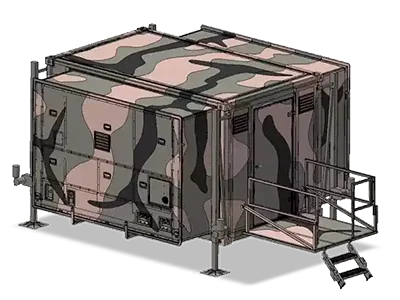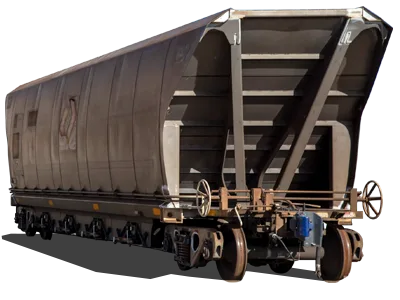Strategic consulting, expert guidance
Varley Systems’ consulting services help to optimise organisational efficiency, application specificity, and maximise the impact of your ICT investment.
A specialist's perspective
Elevating businesses with strategic ICT consulting for innovation, efficiency, and secure, sustainable growth.
Varley Systems’ consulting service is dedicated to optimising project alignment and ensuring the successful delivery of solutions in line with the overarching Information & Digital Services strategy. Our specialist consultants provide clear direction to mitigate risk, foster agility and future-proof solution architecture.
Varley Systems’ commitment includes delivering centralised documentation to support future audit reviews, contributing to improved program delivery efficiency.

ICT Domain Architecture
Varley Systems worked with domain leads from two Government agencies to understand the current environments, identify specific issues that required mitigation and developed a solution that would allow the merger to succeed.

ICT Strategy
We facilitated the development of a five-year ICT strategy and roadmap with cost estimates to improve ICT services to users and clients.
ICT Domain Architecture
The Brief: Review the current state and business drivers for four ICT domains and then provided target state Architectural roadmaps for End User Computing, Hosting and Cloud services, Networks and Cyber Security following the merger of two large NSW Government Agencies.
Following the merger of two large NSW Government Agencies into one new department with more than 22,000 employees, Frame were approached to work in conjunction with an international consulting firm to assist the new Agency with developing future ICT strategies.
Historically, both Agencies developed a range of domain architectures to guide technology investment. Since the Machinery of Government (MoG) change in July 2019, focus has largely been on operating in the new environment, MoG integration projects, Whole of Government projects, securing funding and coping with multiple crises.
There had been some, but overall limited focus on updating or building domain strategies and architectures. As a result, there were several enterprise architecture related issues faced by delivery programs as well as opportunities for improving technology capabilities and efficiencies.
Delivery of programs across the new Agency, without appropriate architectural direction increased the risk of delivering program outcomes and intended benefits as well as potentially increasing overall technical architecture complexity and support.
In particular, the Protect Highly Sensitive Data and Increase Productivity (PHSDIP) Program had specific technical interdependencies and risks that needed to be managed:
- between technology solutions the Program will implement, and technology used by the Agency, the Cluster, state and federal government agencies, their partners and citizens, and
- between technology solutions delivered by the various program streams.
Also, the department was moving to new head offices in 2021 and needed to undertake a number of projects to support new and flexible ways of working. These projects were also dependent on and would benefit from relevant domain architectures.
The Outcome
Varley Systems’ Frame Group were successfully able to:
- Ensured that projects and solutions delivered on the strategic intent of the business cases and overall Information & Digital Services (IDS) strategy.
- Reduced risks of rework by providing clear direction for solution architects within programs and projects.
- Increased agility and future proofing of solution architecture that enabled ongoing flexibility and sustainability.
- Provided appropriate and centralised documentation to support future audit reviews.
- Improved program delivery efficiency.
What we did
Using an Agile Approach (i.e. fixed budget/time and variable scope) Frame to developed domain architectures in which the key Agency Stakeholders prioritised requirements based on the need to:
- develop target state architectures that guided the work on projects and simplified solution architectures through the use of repeatable patterns.
- mitigate risks of rework that may have arisen due to technical conflicts (i.e. solution architects designing different or mutually exclusive solutions to the same or similar requirements).
- address the backlog of architectural decisions and enabled the client to have moved to a more principled based evolutionary architecture model.
- develop and store appropriate artefacts that supported maintenance of solutions once implemented.
- address the NSW Government hosting directive of Public Cloud for all new/transformed initiatives.
The scope was to develop four (4) ICT domain architectures based on an agile consulting approach which consisted of a program of sprints, the Domain Architectures were:
- End User Computing
- Hosting & Cloud
- Networks
- Cyber Security
The scope for each domain was agreed with relevant stakeholders prior to each sprint based on priority and team capacity. These interactions included interdependencies, overall sequencing and architecture decisions required to support PHSDIP and the move to a new joint office.
The initial phase involved mapping out the current state for each of the domains in both Agencies. This highlighted significant technical debt as well as showing that the two Agencies had very different approaches to implementing IT solutions, with one preferring a more traditional locally hosted approach with the other favouring a hybrid cloud approach.
Working with the stakeholders Frame then developed target state architectures and high level roadmaps documenting the sequence of tasks required to move to the agreed target states.
These target state architectures were not prescriptive, but rather a set of guiding patterns that enabled architects to develop solutions that followed agreed standards and technologies.
ICT Strategy
The Brief: Conduct a current state review and risk assessment of the ICT environment highlighting areas that required mitigation with a focus on developing an upgrade plan and roadmap
The arrival of a new CIO prompted an engagement with Frame to review the existing ICT environment to understand the risk profile, identify any immediate remediation requirements and the development of a new five-year ICT Strategy.
With ageing infrastructure, nonexistent or poor processes and significant technical debt it was clear that ICT had been severely underfunded for many years and the Department required assistance to assess the requirements, risks and the subsequent development of an ICT Strategy.
The Outcome
The current state review highlighted numerous risks that the Department were advised to remediate as soon as possible. These included items such as:
- Unsupported hardware and software
- A reliance on legacy applications
- No fully tested disaster recovery or business continuity solutions
- A high number of different locally installed desktop applications, approximately 140, across a relatively small number of end users
- No IT service management tool for incident management and reporting
- No monitoring tools to provide IT infrastructure performance information and alerts
- A lack of rigour regarding the formal regular testing of file and server restores
- Limited remote access connectivity.
Frame documented the findings in a comprehensive report and presented a summary version to the Department executive committee, in particular highlighting the risks.
Frame also developed, and presented a five-year ICT Strategy, with price estimates and an implementation roadmap.
The highlighted issues became very pertinent as the first Covid 19 lockdown began only a few weeks after submission of the report and the Department had to very quickly remediate issues such as remote access, ICT monitoring and migrating to a simplified desktop including Microsoft365.
What we did
The review included all aspects of the ICT environment, including:
- Desktops
- End user applications
- Network, compute and storage
- Disaster recovery and business continuity
- Help desk and service management.
Frame undertook a step-by-step approach so that stakeholders and ICT staff were fully engaged, consulted and informed throughout the process. This involved:
- Engage with the key Department stakeholders
- Undertake a desktop review of information provided
- Gather, collate, review, and analyse the existing supporting documentation
- Interview the ICT team members
- Document the current state assessment report, highlighting risks, together with a five year strategy to modernise the ICT
Whilst the review of the current state, and its documentation, was driven by Frame the development of the road map was a collaborative exercise with all members of the ICT staff, the CIO and project staff working with Frames’ guidance to identify requirements and develop practical and achievable solutions and timeframes.




